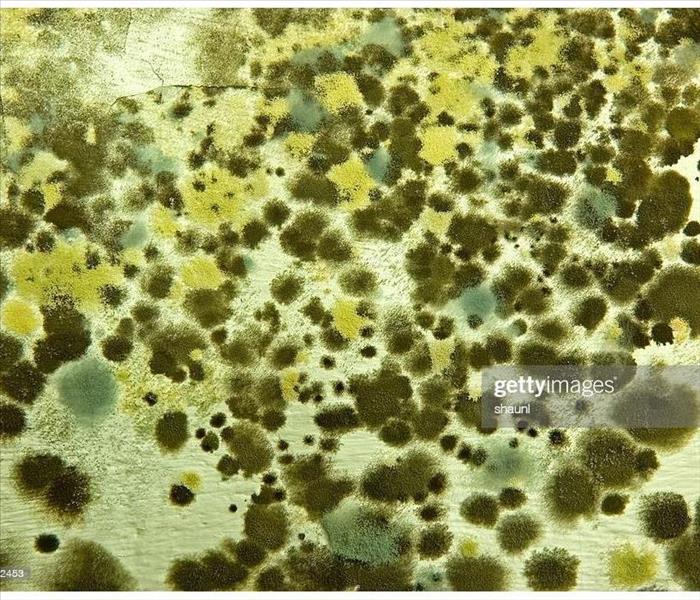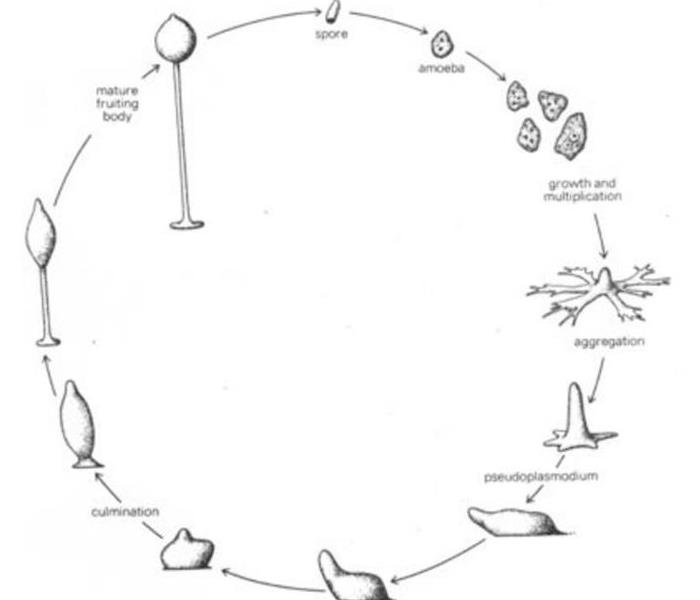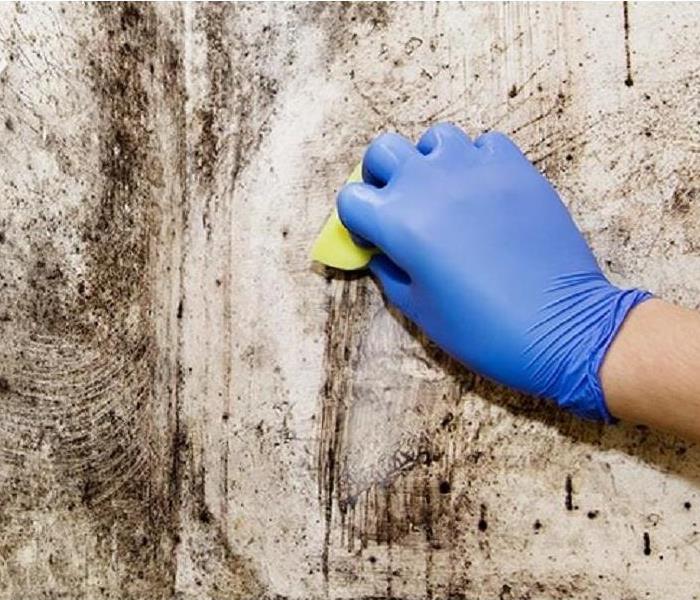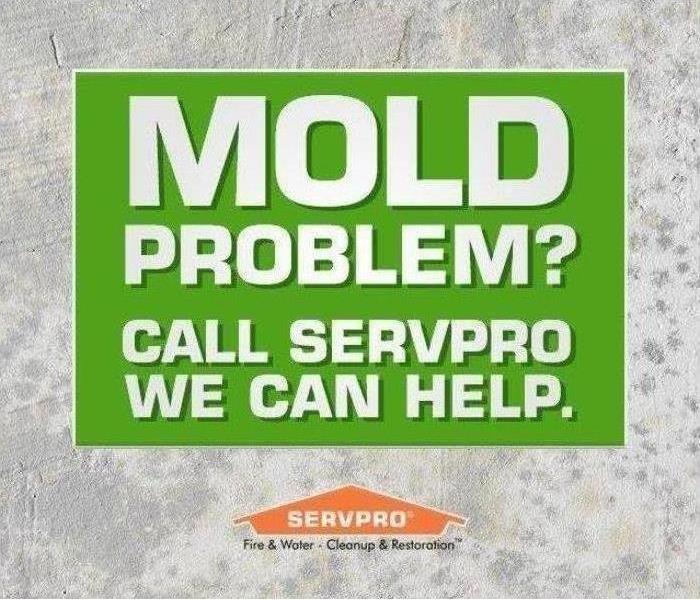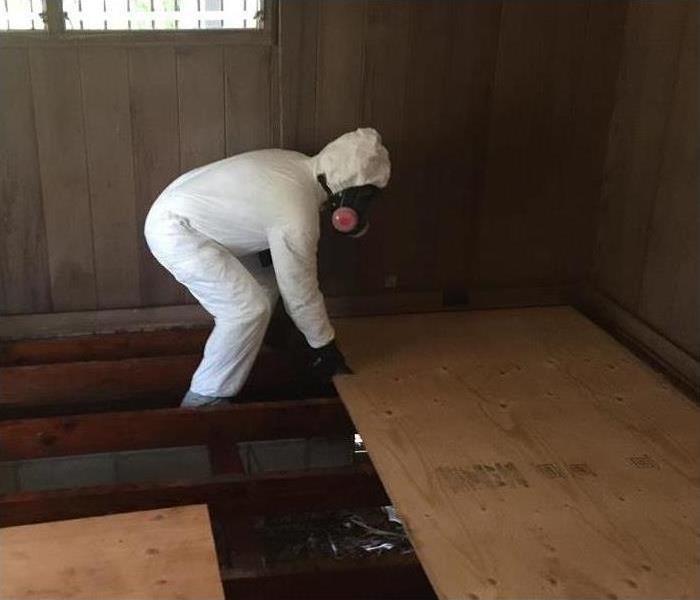Archived Mold Remediation Blog Posts
HOW TO SAFELY REMOVE MOLD FROM YOUR HOME
4/14/2023 (Permalink)
Mold is a type of fungi that grows in damp, humid environments. Mold spores are everywhere – in the air, on surfaces, and in the dust. When these spores come into contact with moisture, they can start to grow and multiply. Mold grows best in warm, damp, and dark places. It can often be found in bathrooms, kitchens, basements, or any other area of the home that doesn’t have good ventilation.
If you think you have mold in your home, it’s important to take action immediately to remove it.
The first step is to identify the source. Mold can grow on many different surfaces, including paper, wood, carpet, and cloth. Check for visible signs of mold growth. Look for discoloration or staining on walls, ceilings, or floors. If you see mold growth, you should also look for any damp or water-damaged areas in your home. These areas may be the source of the problem. Check for leaks in plumbing fixtures or appliances. Look for condensation on windows or in other cold spots.
Once you’ve identified the source of the mold, you’ll need to decide how to remove it. You can use commercial cleaning products, bleach, or vinegar. However, it’s important to note that none of these methods will completely kill mold spores. As such, it’s important to take precautions to prevent mold from returning.
One of the best ways to remove mold is to use a mixture of water and bleach. This solution will kill most types of mold and spores. However, it’s important to use caution when using bleach as it can be harmful to your skin and eyes. If you’re not comfortable using bleach, you can also use vinegar. Vinegar is a natural disinfectant and will kill most types of mold.
Once you’ve removed the mold from your home, it’s important to take steps to prevent it from returning. One way to do this is to make sure that your home is well-ventilated. This will help to reduce the humidity in your home, which is one of the key conditions that mold needs to grow. Additionally, you should regularly clean all surfaces in your home with a solution of water and bleach.
If you have mold in your home, it’s important to take action immediately to remove it. As a matter of fact, mold can be dangerous to your health, so it’s important to remove it as soon as you see it. Although there are many do-it-yourself mold removal products on the market, we recommend that you leave this job to the professionals. Our team of experts has the experience and training necessary to safely and effectively remove mold from your home. Contact us today at SERVPRO of East Honolulu for a free consultation.
The Importance of Testing for Mold
1/20/2022 (Permalink)
Testing for the type of mold, the severity, and the density within the rooms is the only way to get the full picture. SERVPRO of East Honolulu cares about our community. Mold is no easy feat on the account of its mobility, we understand the necessary sensitivities that ought to take place when dealing with mold.
As challenging as it may be from air-borne fungal spores, to humidity levels for mold breeding. SERVPRO of East Honolulu cleans and kills mold in spaces. Mold spores are microscopic, with unventilated air space they increase dramatically with time. Eventually creating a mold colony. Physical manifestations of mold indicate that the spores have been active for a while. Activated on organic wet materials, like particle boards on dressers or wet drywall from a pipe leak.
Ensuing the need for tests and specific measurements. The start of mold colonies or “hot spots” are just the tip of the iceberg. It is hard to instantly know the needed treatment of your property without taking a look into the microscopic world. We test air quality, to find how many spores are in the most affected area. We also have to test some materials in which physical colonies of mold are on. These surfaces will give us a good idea of moisture content and the water needed to sustain such a hot spot. To also know the extent of the mold, we also take a sample seemingly furthest from the area- gaging the change in air quality.
Testing the air quality is an important start to the de-molding process.
Ask about our full mold procedure:
(808)395-9545
The Reason Insurances Love Us
7/30/2021 (Permalink)
We are the Certified Mold Remediation Technicians Preferred
Mold is a hard to solve issue with dynamic tactics needed, seldom do people absolve mold without professional help. When mold gets really bad, to the point of physical infestations, malodorous smells, and discolored building materials… it is time to call your insurance.
It is integral to go through the insured route- adjusters tend to favor mold remediation done by certified individuals from notable institutions like the Institute of Inspection, Cleaning, and Restoration Certificate.
SERVPRO of East Honolulu is a trusted brand to insurances all over our East Honolulu community. We pride ourselves in having regulated safety procedures, teaching our people the first time, the right time.
Our treatments are from a sound mind with analysis in respect to water moisture, air quality, and conditions of the housing materials.
Mold remediation is seldom covered with the specific peril policies of homeowner policies. Yet, when mold remediation is needed and insurances cover it; due to the inherent issues with mold growth they tend to gravitate to professional services.
Certified mold remediation experts tend to be knowledgeable in disposing/safe handling mold contaminated goods. This involves protective gear and equipment, often gloves, masks, hazmat suits… etc. Also meaning expert information to enclose the affected area to limit exposure for your property and ohanas alike. This is the IICRC standard, the standard SERVPRO of East Honolulu.
The IICRC is the golden standard for the remediation and restorative industry. This entails controlled demolition, water cleanup certificates and a standard for mold remediation's. Our technicians Lorenzo Usam, Mike Usam, and Tracy Kono all have the IICRC information to professionally combat mold.
We make sure to test the mold before we do any work, that way knowing all variables thus all situations are accounted for. This way it is less money for you- our customers- in the long run, and a cleaner finish. Which starts and ends with integrity.
DIY-ing mold removals or trying these homemade remedies may backfire on you. Leaving the mess to us relieves your stress and the problem!! Insurance companies know this, and also know we are more than willing to leave a job well done. That's why after we clean the mold we take two tests back to a lab for air quality. And if it is not kosher for the state of Hawai’i regulations, we will do it again.
Aloha, stay cool under the sun with SERVPRO of East Honolulu on your side.
Call us at (808) 395-9545
Bleach is Not a Solution to Mold
7/20/2021 (Permalink)
Bleach has previously been deemed kosher by numerous agencies and self-help gurus online but has recently been discovered to be a trigger to increased mold growth and an improper biocide- chemical solutions that kill organisms.
Occupational Safety and Health Administration (OSHA) and the Environmental Protection Agency (EPA) have stopped recommending bleach as a method for disinfecting mold surfaces.
Due to the innate properties of mold- a living organism and bleach- a chloric solution.
Bleach is a toxic cleaning solution, and to be frank is outdated. By the dozen there are more effective, EPA friendly, cleaning solutions available to the public and businesses alike.
There are affordable solutions that will not break your bank, for a safer clean and a less erosive finish. Bleach is water and chlorine, chlorine evaporates faster than water, the potency diminishes over time.
Justly so, bleach does not thoroughly clean porous materials. It evaporates too quickly before it reaches all parts of these surfaces: namely drywall and wood finishes.
Mold is a living organism, air-borne fungal spores! Unlike other microbial threats this one can adjust accordingly to its known dangers.
Mold spores do not die when there is no host present, they live on organic materials like moss on rocks. So drywall, wood furnishings, plants, mold clings to anything.
Unfortunately, mold does not deactivate or die until humidity is below 30%. Regardless of solutions being sprayed, since it is mostly found in the air, just a chemical solution will not solve your problem.
With bleach, mold can sense that this kills mold colonies. When this is registered to mold bordering where one sprays the solution, it triggers the mold to act defensively. To reproduce more mold at a significantly higher rate than pre-bleach.
Enabling itself to be more entrenched on porous surfaces and more crevices of your home. On materials like wood the mold will find itself deeper within the pores retreating from the surface. Although bleach disinfects the surface-level mold spores, this is only part of the picture.
SERVPRO of East Honolulu knows how to prevent the spread of mold spores, with EPA-friendly cleaners and a dehumidifier deactivating the spores in the space. Consequently vacuuming everything from ceiling to floor.
Call the professionals with any questions or mold concerns at (808) 395-9545
Do You Have Signs of Mold in Your Honolulu Home?
12/10/2020 (Permalink)
If you're a homeowner in the East Honolulu area, there are a few warning signs of mold/mold spores growing. It is essential that you know how to keep you and your ohana family especially if there is a mold infestation. Here are some indicators that you may have a mold problem:
-One of the first things that indicate that there is a presence of mold in your house is the smell. This presents itself as a musty smell. Do not avoid this smell, make sure you can find the source of the odor.
If one is incapable of finding the source that is OK! Here at SERVPRO of East Honolulu we can find that source for you, but call us as soon as you smell a possible mold smell.
- Often if there is visible mold growth in a home one can mistake it for soot or dirt. Make sure that anything that looks remotely like mold is assessed. Even small patches of mold can grow exponentially and cause an even bigger problem.
When you do find VISIBLE mold that means that the spores can know germinate. This germinating process can cause health effects for your ohana as the spores of mold are airborne and can interrupt healthy organisms such as you or your pets of any kind.
- Taking care of moisture in the home, here in Hawai'i we know how humid it can get. Make sure that you try to do your best in taking care of moisture in the house.
The best way to avoid mold spores or growth in your house is to ensure there is no place it could grow. There aren't any areas with concentrated moisture or show any signs of becoming a mold nursery. For more information on controlling humidity or preventing mold growth refer to our previous blogs on mold growth.
As always SERVPRO of East Honolulu is here for you whenever needed and our experts in cleaning and curing your hale of mold and remediating.
Recovering From Mold Growth
7/20/2020 (Permalink)
Recovering from a mold infestation is no easy feat! Mold and mildew are very pesky and hard to completely get rid of. Once we at SERVPRO of East Honolulu have finished our jobs, there are tasks one can do to make sure that we don't have to come back.
- Always dry it up
After remediation there are bound to still be mold spores whether there are dormant or floating in the air. When your basement leaks or there is any spill water/spills immediately clean it up. These spores can be dormant for years and only need the right amount of moisture to be revived. Here in East Honolulu, humidity is inevitable but moisture spots and wetness doesn't have to be!
- Bathroom Humidity
Bathrooms are the best habitat for growing mold! Make sure that there is a good ventilation system in your bathroom. If there is excess pools of water after showering or bathing... clean them up!
- Fabrics!
Again, the best prevention is not activating mold spores, fabrics tend to allow mold spores to cling. Keep your fabrics clean and dry, especially around the area that was your problem area.
- Plan!
Keep a remediation plan if there is an occurring mold problem, or if you got a mold remediation done. This way you'll know the vulnerable spots in your home/business area and how to prevent a mold buildup.
The Life Cycle of Mold, and What You Need to Know
7/15/2020 (Permalink)
One of the biggest problems here in Hawai'i is the increased risk of mold growth. We are so lucky to be servicing you here in East Honolulu, and one of our most requested services is our mold remediation.
We have great information on our mold remediation page, this includes basic information like mold remediation vs mold removal, black mold, our process... etc,
The mold life cycle is crucial for one to understand when dealing with a mold infestation
To start mold growth, there needs to be an increased amount of moisture, nutrients (whether it is from a dead animal, droppings from an animal..etc) and humidity.
Some molds can cause adverse health effects. That is why it is imperative for one to immediately get rid of mold as soon as there are indicators of growth. Some mold can even produce and release harmful toxins.
There are four stages of the mold life cycle: Hyphal Growth, Spore Establishment, Spore Dispersal, and Spore Germination
Hyphal Growth: The Hyphal is the name of the cells that start the whole mold life cycle. These cells start the process when they release enzymes that absorb nutrients in order to growth the visible portion of the mold fungus.The nutrients can be extract from various sources such as dirt, debris, wood, decaying organisms or construction dust. This visible showing of fungus is called a "mycelium".
Spore Establishment: The start of spore growth means the end of the "hyphal" cells. Some are lucky, and the life cycle of the mold can end at the hyphal establishment if needs are not met. The growth of spores depends on many factors including light, temperature, oxygen levels, and nutrients to pull from. If these specific needs of the factors are met then there will be a continuation of mold growth and continual spreading of the mold.
Spore Dispersal: After there is an established presence of spores, the spores are released into the air in order to start the germination process again. Mold spores are really dangerous and can be tough to remove, spores can remain dormant for years even in extreme weather and driest environments. This is when the toxins and respiratory problems occur. Once it is airborne that can cause health effects.
Spore Germination: The mold spores in the air are really hard to remove because of their strength. The germination will eventually occur when a spore lands on a hospitable area ready for more growth. And the whole cycle is repeated.
This growth cycle can happen within weeks or years. That is how strong mold is, and although there is no solution that completely eradicates the possibility of mold growth. There are new innovative ways to curb and eventually prevent the growth of mold that SERVPRO of East Honolulu can provide.
One of our best technological devices we use are our "air scrubbers" that take particles from the air and traps them in our machine. We also completely remove anything that could have been affected by the mold. Whether it is of soft material or your drywall. The disinfectant process occurs after that, and eventually restoration happens.
We are also doing our job to make sure that you are the utmost protected and safe. We know how pesky mold can be, and although there is no 100% of mold eradication. We get pretty darn close because of our strict adherence to procedure and understanding the mold life cycle.
If there is any indication of mold or a high risk of mold growth DO NOT hesitate to call us at
(808) 395-9545
Mold in Hawaii
5/16/2020 (Permalink)
Mold is a rampant problem in the state of Hawaii, and we at SERVPRO of East Honolulu know what can happen if not handled properly.
Mold generally does not grow when the humidity is over 60%. This is near impossible to do in Hawaii without expensive tools.
This can be an extreme issue, as even one Mililani resident had to re-locate due to extreme black mold growth.
Here are some simple tips to stop the mold growth before we step in:
1. Assess why your mold is growing. There is one thing that we cannot control, and it is the temperature and the humidity. These are the biggest factors in growing mold, but we can control how it affects our homes. If it is on the surface one can simply paint over it or use a half ammonia and half water solution. Leave it on for 5-10 mins and then clean, if that does not work. Repeat with just a vinegar solution. If neither of these solutions work it is time to call us, meaning the mold is deeper inside your house than it appears.
2. Prevent the mold before it even comes, whenever you have water damage or water inside your home; dry everything and anything as quickly as possible! We can't help our climate but we can control the water amount inside our house. Make sure you clean up excess water to stop any type of growth from bacteria and mold spores.
Mold is messy but we can ensure our safety using these simple cleaning/prevention methods!
Guide to Mold Colors
9/6/2019 (Permalink)
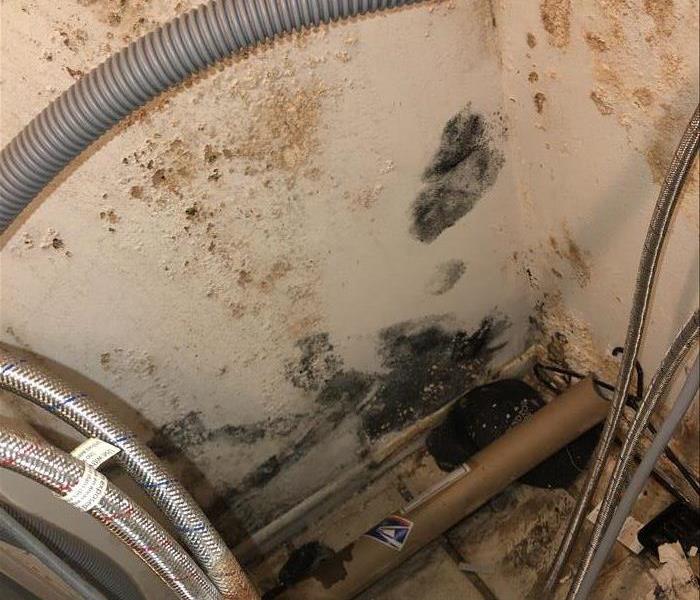 Mold produced by moisture behind home's washer unit
Mold produced by moisture behind home's washer unit
Like most fungi, molds grow best in damp conditions — think bathrooms and basements. If the spores find a moist surface to land on, they grow.
Here, a color guide to molds commonly found in the house.
Green
If you see green mold, it could be just about any type of unwelcome fungus. There are more than a hundred thousand types of mold — and thousands of species of green mold. So what does the color green tell you? Not much.
Olive-green, brown, grey or black
These are common molds. Outdoors, they lurk on plant leaves. Indoors, they're often found on walls and insulation and can grow on damp carpet, too.
Blue, green, or white
These molds are also common. It’s usually found on food and walls.
Yellow, green or black
According to the CDC, people breathe in these molds every day, usually without getting sick. It’s a very common household mold and can found virtually everywhere you’ve experienced water damage.
Black or grey
These is most common as an outdoor mold, growing around damp, dusty areas, soil and plants. But it has made its way indoors.
Pink
The pink “mold” often seen in the bathroom in the form of a slimy, pinkish discoloration on sinks and tubs is actually bacteria, not mold. It thrives on soap and shampoo residues.
Greenish-black
This mold is the infamous “black mold." It's less common than the molds described above. It prefers to live on high-cellulose, low-nitrogen surfaces, which include drywall, gypsum board, paper, dust and lint that is regularly exposed to moisture. The CDC notes, "Growth occurs when there is moisture from water damage, excessive humidity, water leaks, condensation, water infiltration, or flooding. Constant moisture is required for its growth."
If there is any indication or question if there is mold in your area, do not wait and call SERVPRO of East Honolulu any day, any time at 808-395-9545
Does Bleach Kill Mold?
4/5/2019 (Permalink)
Bleach is probably the most well known mold killer. In fact many commercial mold killing products contain bleach.
Does Bleach Kill Mold
Bleach kills bacteria and viruses and sanitizes the surfaces it's used on. Bleach also kills mold if it comes into contact with it. The spores and allergens from mold are neutralized as well.
Bleach will kill mold growing on non-porous surfaces like glass, tiles, bathtubs and counter tops. However bleach cannot completely kill mold growing in non-porous materials like drywall and wood. Bleach does not penetrate into these non-porous substances and so only the mold growing above the surface is killed.
Should You Use Bleach to Kill Mold?
The EPA does not recommend you use bleach for killing and removing mold. Bleach is a chemical, and it is better to use natural mold killing products instead. Some good alternative mold killing products are borax and vinegar. Bleach also loses its power with time. Even if bleach is not opened, in 90 days it loses 50% of its killing effectiveness.
Another disadvantage is that bleach is corrosive. Bleach deteriorates materials and the fibers of porous substances. The gas from bleach can even damage your lungs. If bleach touches your skin it can also give you chemical burns.
There is also concern about whether bleach leaves dioxins. Dioxins are highly toxic and carcinogenic substances. They are also teratogenic and animal tests have shown dioxins can cause birth defects.
Bleach can create dioxins in processes like bleaching of wood pulp. Fortunately though, studies have found that bleach cannot form dioxins when it's just used for household cleaning. The materials which are needed for bleach to form dioxins are not usually present when cleaning the home.
Bleach is ineffective at killing mold on many materials, including carpet and upholstery. Bleach won't kill mold on dirty, metallic or porous substances either.
PLEASE CALL SERVPRO of East Honolulu 808-395-9545 IF YOU ARE EXPERIENCING MOLD PROBLEM IN YOUR AREA
Hiring a Professional for Mold Removal
4/5/2019 (Permalink)
If the size of the mold growth in your home is greater than 10 square feet (about 3 feet x 3 feet) the EPA says you should hire a professional mold removal service - SERVPRO of East Honolulu 808-395-9545
Even if the area of mold growth is smaller it's still best to hire a professional. This way you can be certain that the mold will be completely removed without contaminating the rest of your home. Hiring a professional will also ensure that the mold will not come back and that your symptoms will disappear.
A mold professional can also inspect and test for mold in your entire home. This way you can be sure that all mold growth will be found and removed, even if it is hidden.
If you have toxic mold in your home then it's important to hire a professional, even if the mold growth is small. If toxic mold is not removed in the right way it can spread dangerous mycotoxins throughout your home.
How to Prevent Mold
4/5/2019 (Permalink)
The key to mold growth is moisture. Mold can grow on a food source in 24 to 48 hours if the material remains wet. So the best way to prevent mold is by keeping your home dry.
- Inspecting Your Home For Water Leaks
Check your home for any water leaks. Especially look for leaks in water pipes in hidden areas such as in the basement or below the sink. If you find a water leak, you should fix it as soon as possible.
- Ventilate Your Home to Prevent Mold
Exhaust fans help to reduce moisture in areas where water is often used such as the bathroom and kitchen. You can also open the windows for a while when the weather is dry. Outdoor air might bring in moisture when it is raining or during the night, however, so it's a good idea to shut your windows during these times.
- Minimizing Humidity Helps Prevent Mold
It also helps to check the moisture level of your home. The ideal humidity level is between 30% and 50%. A humidity level of 60% or higher can put your home at risk of mold growth.
Decrease the number of things stored in places like the basement. These materials can grow mold, especially if they are made of paper or fabric. Consider throwing away furniture, papers, clothes, and other items if they haven't been used in the last two years. A lot of the time these stored materials are in a bad condition anyway because of their age, so there is often no point in keeping them inside and risking mold.
Indoor plants in pots of soil can also lead to mold. The soil can provide mold with the moisture and nutrients it needs to grow.
- Maintain Air Conditioners
Properly maintaining air conditioners helps reduce the moisture in a home. Air conditioner drip pans should be cleaned regularly. The drain lines should flow unobstructed.
- How to Prevent Mold in the Basement and Storage Areas
Avoid cluttering the basement and other storage areas. Less clutter can increase the air circulation in these areas. If possible, throw out old or damaged materials to create more space. It's also best to keep mainly washable items in the basement, since these can easily be kept clean.
During warm months, install a dehumidifier to make sure the humidity stays relatively low. Replace furnace filters regularly. The basement floor drain should also be regularly cleaned using bleach and water.
- How to Prevent Mold in the Bathroom
Turn on the exhaust fan when you take a bath or shower. Let it continue to run for a few minutes afterwards as well. You should also check the exhaust fan regularly to make sure it is exhausting the air out of the bathroom properly.
If you don't have an exhaust fan then open the windows instead while you bath or shower. Inspect the bathroom for any water leaks too. And wipe dry any surfaces that often get wet.
- How to Prevent Mold in the Kitchen
Make sure the stove exhaust fan works properly and removes steam from the kitchen. Keep the lid on pots that are boiling, if possible, to prevent the kitchen becoming steamy. You should also clean and dry the drip pan of the refrigerator regularly. Make sure to empty the garbage every day and look out for any leaks around the sink.
- How to Prevent Mold in Bedrooms
You spend much of your life in your bedroom so it's important that you keep it mold free. Make sure to keep your bedroom clean and tidy. If possible, discard any clothes, papers and other things that you no longer use. You can also install a dehumidifier in bedrooms to help prevent mold growing from humidity.
Things You Should Know About Mold
4/5/2019 (Permalink)
What are ten things I need to know about mold?
- The key to mold control is moisture control.
- If mold is a problem in your home, you should clean up the mold promptly and fix the water problem.
- It is important to dry water-damaged areas and items within 24-48 hours to prevent mold growth.
- There is no practical way to eliminate all mold and mold spores in the indoor environment; the way to control indoor mold growth is to control moisture.
- If mold is a problem in your home or school, you must clean up the mold and eliminate sources of moisture.
- Fix the source of the water problem or leak to prevent mold growth.
- Reduce indoor humidity (to 30-60% ) to decrease mold growth by: venting bathrooms, dryers, and other moisture-generating sources to the outside; using air conditioners and de-humidifiers; increasing ventilation; and using exhaust fans whenever cooking, dishwashing, and cleaning.
- Clean and dry any damp or wet building materials and furnishings within 24-48 hours to prevent mold growth.
- Clean mold off hard surfaces with water and detergent, and dry completely. Absorbent materials such as ceiling tiles, that are moldy, may need to be replaced.
- Prevent condensation: Reduce the potential for condensation on cold surfaces (i.e., windows, piping, exterior walls, roof, or floors) by adding insulation.
- In areas where there is a perpetual moisture problem, do not install carpeting (i.e., by drinking fountains, by classroom sinks, or on concrete floors with leaks or frequent condensation).
- Molds can be found almost anywhere; they can grow on virtually any substance, providing moisture is present. There are molds that can grow on wood, paper, carpet, and foods.
Call SERVPRO of East Honolulu 808-395-9545 for any questions or concerns about mold in your home/business
Air Conidition MOLD
5/21/2018 (Permalink)
 General Manager, Lorenzo, testing the air for mold in a Honolulu home and it's surrounding area
General Manager, Lorenzo, testing the air for mold in a Honolulu home and it's surrounding area
Air conditioner mold can spread throughout the house every time you turn your air conditioner on and exposure to mold can lead to numerous health problems, including respiratory disorders and allergic reactions. Air conditioning mold needs to be removed as soon as possible, to protect your health and the health of your loved ones.
The Air Conditioning Contractors of America (AACA) explains that keeping your air conditioning ducts free of dirt and other debris can reduce the likelihood of mold growth by making sure there is no organic matter in the ducts on which mold can feed. Mold also needs water in order to grow and condensation inside air conditioning ducts often provides just enough moisture for mold to thrive. There should not be standing water inside your air conditioning ducts, though, and if there is, you need to have your system serviced by an air condition specialist
You should check your air conditioning ducts for mold if you have mold growing in other areas of your home or if you smell a musty odor in a room but don’t see mold anywhere. If you’re not sure if there is mold in your air conditioning ducts or not, you can have a certified mold tester come in and test for mold. He or she can check for mold in other areas of the home, too, since mold in your air conditioning system is easily spread to other areas of the home when you turn on your air conditioner.
Tens Things You Should Know About MOLD
4/13/2018 (Permalink)

- Potential health effects and symptoms associated with mold exposures include allergic reactions, asthma and other respiratory complaints.
- There is no practical way to eliminate all mold and mold spores in the indoor environment; the way to control indoor mold growth is to control moisture.
- If mold is a problem in your home or school, you must clean up the mold and eliminate sources of moisture.
- Fix the source of the water problem or leak to prevent mold growth.
- Reduce indoor humidity (to 30-60%) to decrease mold growth by:
- Venting bathrooms, dryers and other moisture-generating sources to the outside
- Using air conditioners and de-humidifiers
- Increasing ventilation
- Using exhaust fans whenever cooking, dishwashing and cleaning
- Clean and dry any damp or wet building materials and furnishings within 24-48 hours to prevent mold growth.
- Clean mold off hard surfaces with water and detergent, and dry completely. Absorbent materials such as ceiling tiles, that are moldy, may need to be replaced.
- Prevent condensation: Reduce the potential for condensation on cold surfaces (i.e., windows, piping, exterior walls, roof, or floors) by adding insulation.
- In areas where there is a perpetual moisture problem, do not install carpeting (i.e., by drinking fountains, by classroom sinks, or on concrete floors with leaks or frequent condensation).
- Molds can be found almost anywhere; they can grow on virtually any substance, providing moisture is present. There are molds that can grow on wood, paper, carpet, and foods.
Mold Prevention
4/13/2018 (Permalink)
The most effective way to manage mold in a building is to eliminate or limit the conditions that foster its establishment and growth. Mold should not be allowed to colonize materials and furnishings in buildings. The underlying moisture condition supporting mold growth should be identified and eliminated. To remediate problematic mold growth, mold should be removed from materials that can be effectively cleaned and materials that cannot be cleaned or are physically damaged beyond use should be discarded. Occupants and workers must be protected from contaminants during remediation. After emergency situations (such as flooding due to hurricanes), to avoid fungal growth on susceptible materials, it is important to dry them quickly.
- Take emergency actions to stop water intrusion if needed.
- Identify vulnerable populations, extent of contamination and water source.
- Plan and implement remediation activities.
The key to prevention in the design and operation of buildings is to limit water and nutrients. The two basic methods for accomplishing that are keeping moisture-sensitive materials dry and, when wetting is likely or unavoidable, using materials that offer a poor substrate for growth. Specifically, design and maintenance strategies must be implemented to manage:
- Rainwater and groundwater, preventing liquid-water entry and accidental humidification of buildings.
- The distribution, use, and disposal of drinking, process, and wash water, making equipment and associated utilities easily accessible for maintenance and repair.
- Water vapor and surface temperatures to avoid accidental condensation.
- The wetting and drying of materials in the building and of soil in crawlspaces during construction.
Moisture Control is key to Mold Control
4/19/2017 (Permalink)
- When water leaks or spills occur indoors - ACT QUICKLY. If wet or damp materials or areas are dried 24-48 hours after a leak or spill happens, in most cases mold will not grow.
- Clean and repair roof gutters regularly.
- Keep air conditioning drip pans clean and the drain lines unobstructed and flowing properly.
- Keep indoor humidity low. If possible, keep indoor humidity below 60% (ideally between 30% - 50%) relative humidity. Relative humidity can be measured with a moisture or humidity meter, a small, inexpensive ($10 - $50) instrument available at many hardware stores.
- If you see condensation or moisture collecting on windows, walls or pipes - ACT QUICKLY to dry the wet surface and reduce the moisture/water source. Condensation can be a sign of high humidity.
IF YOU SEE MOLD DEVELOPING, CALL US TODAY AT 808-395-9545
LIMIT YOUR EXPOSURE TO MOLD & MOLD SPORES
4/19/2017 (Permalink)
- Avoid breathing in mold or mold spores. In order to limit your exposure to airborne mold, you may want to wear an N-95 respirator, available at many hardware stores and on the internet. In order to be effective, the respirator or mask must fit properly, so carefully follow the instructions supplied with the respirator. Occupational Safety and Health Administration (OSHA) requires that respirators fit properly
- Wear gloves. Long gloves that extend to the middle of the forearm are recommended. When working with water and a mild detergent, ordinary household rubber gloves may be used. If you are using a disinfectant, a biocide such as chlorine bleach, or a strong cleaning solution, you should select gloves made from natural rubber, neoprene, nitrile, polyurethane, or PVC. Avoid touching mold or moldy items with your bare hands.
- Wear goggles. Goggles that do not have ventilation holes are recommended. Avoid getting mold or mold spores near or in your eyes.
Basic Mold Cleanup
4/3/2017 (Permalink)
Best thing to do is call SERVPRO of East Honolulu 808-395-9545, a professional in mold remediation.
The key to mold control is moisture control.
- It is important to dry water damaged areas and items within 24-48 hours to prevent mold growth.
- If mold is a problem in your home, clean up the mold and get rid of the excess water or moisture.
- Scrub mold off hard surfaces with detergent and water, and dry completely.
- Fix leaky plumbing or other sources of water.
- Wash mold off hard surfaces with detergent and water, and dry completely. Absorbent materials (such as ceiling tiles & carpet) that become moldy may have to be replaced.
- Do not paint or caulk moldy surfaces. Clean up the mold and dry the surfaces before painting. Paint applied over moldy surfaces is likely to peel.
MOLD: Facts you should know
1/16/2017 (Permalink)
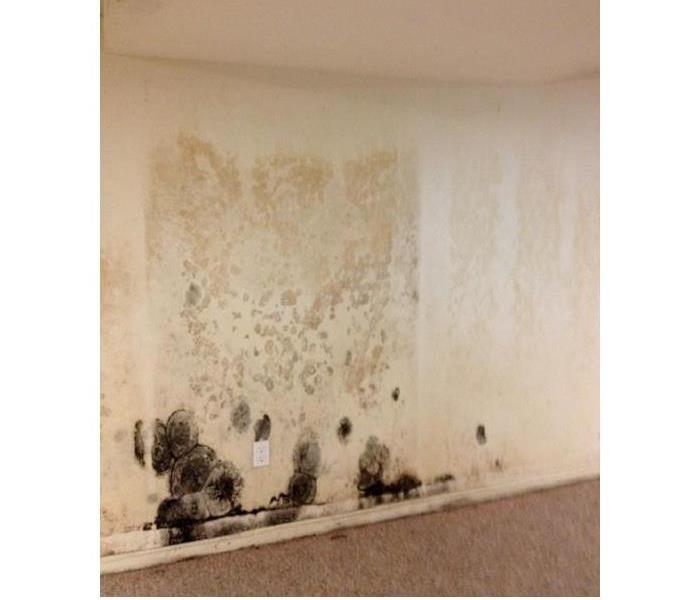
Not all mold is toxic but it can cause allergy problems.
Stachybotrys, a form of toxic mold, is usually found only in homes that have prolonged water damage.
Mold spores occur in the indoor and outdoor environments. Mold spores may enter your house from the outside through open doorways, windows, and heating, ventilation, and air conditioning systems with outdoor air intakes. Spores in the air outside also attach themselves to people and animals, making clothing, shoes, bags, and pets convenient vehicles for carrying mold indoors.
Mold spores can't be eliminated from indoor environments; BUT they will only germinate into mold if there is moisture.
When mold spores drop on places where there is excessive moisture, such as where leakage may have occurred in roofs, pipes, walls, plant pots, or where there has been flooding, they will grow. Many building materials provide suitable nutrients that encourage mold to grow. Wet cellulose materials, including paper and paper products, cardboard, ceiling tiles, wood, and wood products, are particularly conducive for the growth of some molds. Other materials such as dust, paints, wallpaper, insulation materials, drywall, carpet, fabric, and upholstery, commonly support mold growth.
DO NOT PUT BLEACH ON MOLD. THIS WILL FEED IT INSTEAD OF KILLING IT!






 24/7 Emergency Service
24/7 Emergency Service
